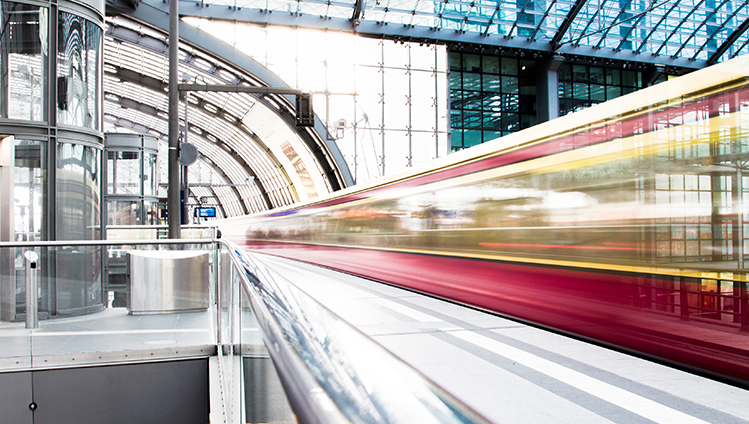
Excellent flame protection for railway engineering
Rail travel is convenient, protects the environment and is good for the climate. Younger people in particular are turning to rail as an alternative to cars and planes to reduce their personal CO2 footprint. The rail sector forms part of sustainable local and long-distance passenger transport and is an important element of the mobility transition. To ensure that trains travel safely, the requirements placed on wagon construction are very high. Fire protection is a top priority for rail safety. All components must be certified according to stringent standards. An excellent development team of rubber experts at Continental have taken on this challenge.
Premium quality: certified and easy to process
Our experienced compound experts in Hamburg and Walterhausen have conducted hundreds of laboratory tests over two years to develop new flame retardant compounds for profiles, seals and molded parts. The rubber compounds are flame retardant according to the EN 45 545 R22 / R23 fire protection standards for rail vehicles. “They are also easier to process than other flame retardant compounds on the market,” explains Dr. Michael Schwegmann, responsible for rubber compound research and development at Continental in Hamburg. “Despite a high level of fire protection, we have managed to develop a compound that is not too dry and allows for a smooth surface.”

“We have succeeded in developing new flame retardant compounds that offer a high level of safety and best processability for profiles and seals.”
Dr. Michael Schwegmann, responsible for rubber compound research and development at Continental Compounding Technology
Pooled expertise for safe high-tech compounds
To create the new premium flame retardant compound, our development experts worked closely together across company locations – utilizing decades of experience and working closely with customers from various industries. They shared information on raw material properties, vulcanization processes and potential applications between all locations. Expertise was pooled, know-how shared and countless compound tests examined in the laboratory. Our experts employed the method of static test planning in order to work in the most effective and target-oriented manner possible. Their efforts have made it possible to develop compounds of such high quality.
Fire protection principle in flame retardant compounds
Chlorine and halogen-containing substances have been used for fire protection in materials. Because of the hazardous fume toxicity, the focus today is on halogen-free compounds. Salts and minerals that actively combat the flames during fires are now used. Some substances produce water when they burn, counteracting the fire. Others achieve a flame retardant effect by extracting heat from the fire.
Our flame retardant compounds help make rail travel safe and a viable option for the future. The rubber compounds are used in door and window seals for passenger trains throughout Europe. They seal and dampen the train compartments, ensuring good conditions inside and outside the trains.